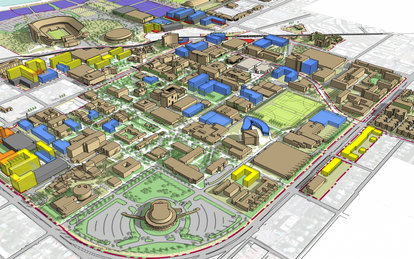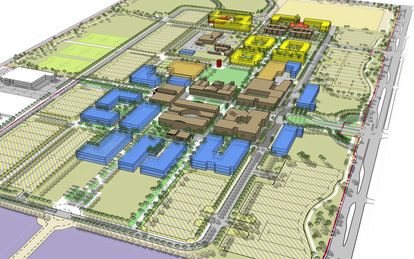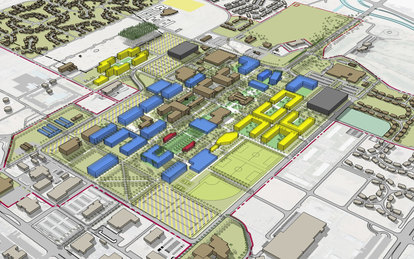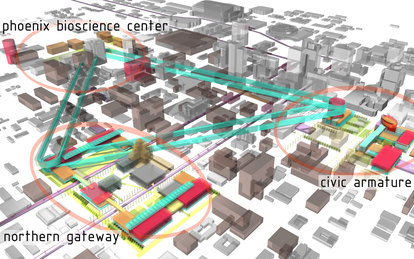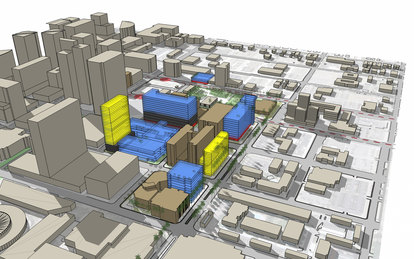Arizona State University Master Plan
Arizona State University engaged our team to identify ways that the University might unify and connect their four urban campuses, while remaining true to each individual place. The plan not only identifies future areas of growth but anticipates the changes that its own tactics will facilitate.
客户
Arizona State University
位置
Tempe, Arizona
市场/服务
Campus Master Plans, Campus Planning, Higher Education
大小
634 acres
As Phoenix evolves, so do the needs of one of its top universities. Arizona State, known for innovation, needed its four campuses to mirror the modernity reflected in its academics.
The university’s campuses are dispersed among four cities — Tempe, Phoenix,
Glendale, and Mesa — all of which have undergone tremendous transformation since the university’s last master plan was completed over a decade ago.
Because of SmithGroup’s involvement in twelve landmark projects associated with the invigoration of downtown Phoenix and the growth of Arizona State, our team was selected to further develop the Arizona State master plan in congruence with its campuses’ evolving locations.
The university didn’t want the plan to simply respond to a set of changing
factors — it wanted it to anticipate, perhaps even precipitate future change. In essence, the plan would be proactive, rather than reactive, thus requiring our team to understand not only the university’s growth potential, but its growth capacity. Through an analysis, we explored how much growth it could sustain given its current conditions and locations.
Because the master plan was intended to accommodate all the university’s campuses, it needed to have a general and implementable program, so it could work for four disparate locations. However, each campuses’ distinct features and character needed to be accounted for, and so the plan, while maintaining a consistent framework, also needed to have enough flexibility to respect the unique nature of each place.
Establishing the school’s project priorities over the next ten years would be key to implementing these changes. Once completed, the rapidly growing urban centers that are the colleges four campuses will feed off the collective synergies of their fellow institutions, and their respective cities.
